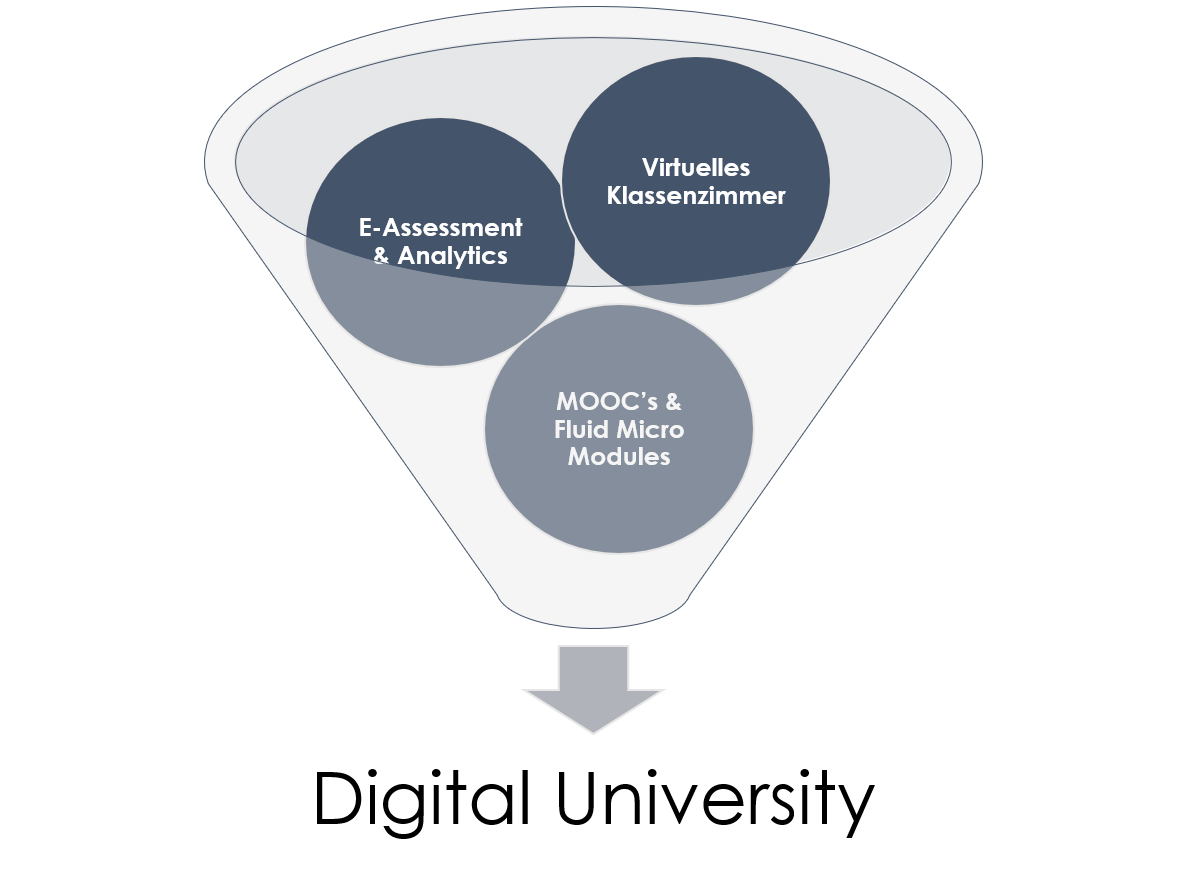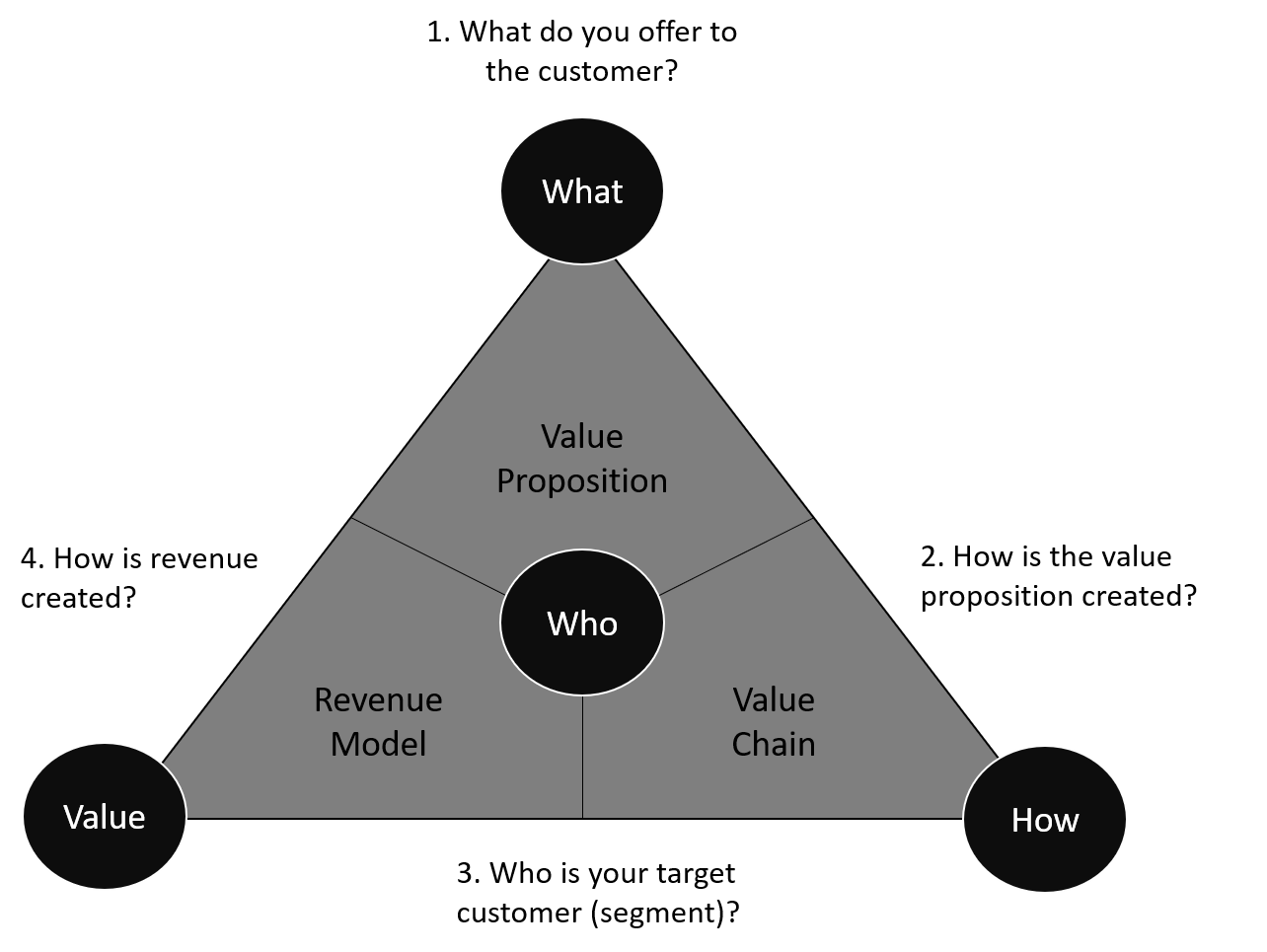Authors | Sources
Severin Renold
References in the text

Severin Renold
References in the text
Education system
In the third and last part of the Education 4.0 series, we will directly enter the next applications for process and offer optimization, in order to be able to draw a short summary at the end of the article.
Learning Analytics
Learning Analytics deals with the growing mass of data generated by students. Learning is “measured” using automatically generated user data from learning management systems. The user behaviour is analysed and so-called patterns are determined. These should then be used to evaluate whether the student has a successful or unsuccessful learning behaviour. The first step in the process of collecting learning process data is always to collect user data. These collected data sets are then brought into a structure for further processing and analysis, where complex algorithms can accelerate the evaluation process. The processed data later allow a prediction and certain conclusions to be drawn about the success of the learning strategy, thus enabling early intervention by the lecturers and optimisation of the learning strategy. (S.66-67, Introduction Learning Analytics, TAB-Arbeitsbericht-ab171)
Although there are legal and ethical concerns in connection with this method, potentials can also be identified. For the students there is the possibility of an individualised learning process as well as feedback during the semester on personal learning progress and a prognosis of learning success. Adaptive learning systems can be used to adapt the learning situation to the needs of the student. The use of Learning Analytics has particular potential with regard to the revision of the learning materials used, for example by evaluating the click rates for individual materials provided via a learning management system. (p.67-68, Potenzial, TAB-Arbeitsbericht) Lecturers thus have the opportunity to check whether their teaching materials are suitable and can decide whether they should be used in the future.
By means of Learning Analytics, universities would have the opportunity to measure the success of courses and study programmes and thus increase their attractiveness on the market by specifically addressing the needs and interests of students.

The Multichannel / Freemium Approach | Blended learning
The focus is once again on the private sector. How can the greatest possible market potential be exploited without neglecting a specific customer group? As indicated in the title, the question is divided into two levels: the supply channel and the depth of supply. These are directly related and vary according to the selection of interested parties. For clarification, the channel is a mix of classical, slightly adapted lessons on site with the physical presence of lecturers and students and the online channel, analogous to the e-learning innovation centre described above. In other words, the way and where learning content can be consumed. With regard to the depth of offer, it would be possible to introduce a different price model for the way in which the university’s offer is to be used intensively. For example, according to the depth of the offer or the exhaustion of existing resources.
If, for example, a student decides to purchase purely online content for which almost no further effort on the part of the provider is necessary, he is in the lowest price or cost category. This should be within a framework in which no class is excluded, so young people from poor backgrounds could also get involved here without any worries. As mentioned in part 2/3 above, the certification for such a course of study could be adapted accordingly, for the sake of full transparency. For students who still want to receive a part of the learning material via classical lessons, even if only selectively or in the form of a package, there is the upgrade variant from the beginner package to the premium offer, which is priced higher to cover the fixed costs, such as the remuneration of the lecturers and the provision of premises. Here, too, there would be scope to develop further models, perhaps for a Mastermind group. An exclusive package with the option of intensive cooperation with experts and premium content, excursions and joint projects in the real world. The latter is also known as blended learning. This teaching method makes it possible to reduce the time-consuming and location-bound presence at universities and thus create a work-life balance with a high degree of flexibility for students. This model is therefore particularly attractive for part-time students. (p.68, Teaching Trends 2016)

Flipped Classroom
Flipped Classroom is a form of blended learning. The term refers to the method of rotated instruction. In concrete terms, this means that the content of classroom teaching and self-study is exchanged and the lessons are thus rotated. Using scripts and videos, the students are supposed to process the theoretical input in self-study, the classroom teaching then serves exclusively to deepen the subject matter through discussions and tasks. The transfer of knowledge thus takes place on an individual basis. The aim of this method is that the students deal with the learning contents on their own responsibility and thus learn actively instead of being intoxicated in lectures. (S.69, Teaching Trends)
Both blended learning and flipped classroom have the negative aspect that social interaction with fellow students suffers and therefore group dynamics are rarely present. (https://journals.sagepub.com/doi/10.2304/plat.2013.12.2.196) Another challenge of the Flipped Classroom is the amount of work involved in the creation of recordings. There are many support tools available, but many lecturers are reluctant to record their own courses. (p.191, Potentials, TAB report)
Co-Working and Open Space
Instead of designing the majority of the available space for closed lessons, an open co-working space would be the ideal form for generic exchange for the majority of students who concentrate on the e-learning modules. A place of inspiration and designed to think and work creatively. Loaded with meeting rooms, whiteboards, office utensils, presentation platforms and stages. This creates a certain dependency on the location, as international expansion would require partnerships with other educational institutions to balance the quality standard and benchmark of the offering.

Livestream
The livestream lessons would also be part of the multi-channel offer. A mixed form between the digital and analogue channel, potentially also bookable as an upgrade in the pricing model and referring to the freemium approach. In the process, individual modules are streamed live from the classroom into the whole world. Another way to scale from any location and keep the user experience high.
Virtual Classrooms
Virtual classrooms are online spaces designed for learning. Mostly they are part of a learning management system. They enable live instruction, either for individual students or for groups. These include live video and audio streaming capabilities, an interactive whiteboard, or sharing the desktop view to share learning materials with fellow students. In addition, a virtual classroom can include additional features.
Most virtual classrooms are cloud based, meaning that neither students nor faculty need to download anything onto their own computers to become part of such a classroom. Virtual classrooms have the advantage that they are optimally multi-device capable and therefore ideal for students who need to do some work in addition to their studies.
The variety of functionalities of this teaching method can vary depending on the intensity of use and application. A fixed part of virtual classrooms is usually sharing video presentations with the class, using live chats, sharing learning activities to motivate others, and integrating instant feedback. (Source: https://www.cae.net/what-is-virtual-classroom-and-how-to-use-them-effectively/) The latter could very well be combined with e-assessments in the learning management system.
In virtual classrooms, so-called synchronous distance learning takes place. The main goal is to replace classroom teaching with such lessons to a large extent. In contrast to blended learning and flipped classroom, this teaching method promotes group dynamics in which location-independent learning communities can be formed, which at the same time increases the motivation of individual students. This cooperation leads to an increased efficiency of the learning process as well as a development of the social competences of the students.
Through virtual classrooms, the boundaries of traditional teaching can be crossed. In the course of time and with repeated implementation of the modules, the workload of the lecturers will be significantly reduced, enabling them to respond more specifically to the needs of the students and to design the lessons even more individually. (p.944-946, The Future of Virtual Classroom: Using Existing Features to Move Beyond Traditional Classroom Limitations, 2018_Book_InteractiveMobileCommunication)

Current substitution products and channels
In collaboration with renowned universities such as Stanford and Harvard, platforms such as Coursera and EdX offer English-language online courses on various key topics. (https://www.edx.org/ and https://blog.coursera.org/about/) However, as the cooperation here seems to take place exclusively with universities, the question remains as to whether the courses also impart the desired specialist knowledge that is required at universities or whether they merely offer theoretical input.
Udemy, Udacity, AZEK and co.
Learning platforms are no longer new inventions. Many providers have been able to gain considerable market shares in the last 5 years. The demand shows a clear growth and the interaction of high-quality contents and user friendliness will show in the future, who can prevail in the long run. Providers such as Udemy, Udacity or AZEK from Switzerland are a role model for this. According to the subscription model, users can register independently of their backround and book complete courses for a price of CHF 13 that aim to specifically address a desired area. For example, a Web Developer Course 2.0 from Udemy, which splits into 1-10 minute sub-videos. The user can thus switch comfortably from course to course without being in a hurry or underchallenged. If an already completed topic is no longer present, the user can easily repeat this by using the replay function. Such training is aimed at a high skill level, but only occasionally enjoys international or cross-institutional accreditation in the form of nanodegrees, which can be converted into ECTS. However, it is foreseeable that precisely such degrees will be more widely accepted in the future in order to remain competitive. Alternatively, AZEK would also be available as an example on the Swiss market. The AZEK Academy trains interested parties in finance. This also works by means of an e-learning platform for which one can register via an online form without having to contact teachers or administrations. Afterwards one gets access to all contents, can work through these individually and for the conclusion finally a half-yearly announcement email with the examination dates is sent, for which one can register likewise on-line and take these then locally. In contrast to Udemy or Udacity, AZEK offers internationally recognised certifications for successfully completed examinations, such as the AWM title (Association of Wealth Managers).
Other models can be seen, for example, in startups that offer Bachelor’s or Master’s degrees but have pricing based on the Netflix model. A monthly lump sum is due, which then allows the student to make use of the entire offer, regardless of the thematic orientation. In the final analysis, this means that a Bachelor’s degree in Business Administration can be completed for the equivalent of CHF 500, but just as well for CHF 5000 if the student needs a little longer to complete the tests.
Video portals
From time to time video streaming platforms such as Youtube or perhaps in the future Netflix will establish themselves as a further channel. A popular provider from the German-speaking area is The simpleclub. (Source: simpleclub business – Die Lernapp für Ihre Azubis – 2019) Free content is published here, some of which has over 1 million views per video. The success strategy here, on the other hand, is expressed through the mediation of the content. Instead of proceeding strictly academically and using classic expert jargon, this format focuses on the simplicity of the content conveyed. If the content is always accompanied by a humorous touch, the topics are also dealt with in 3-10min videos and conveyed in the most understandable way possible. The increasing number of subscriptions as well as the predominantly positive feedback rate in the comments and evaluations confirm the recipe for success of such methods.
Private courses
Another way of imparting knowledge became established with the upswing of social media. This was done by offering self-proclaimed experts who reveal their knowledge through specially created courses or live events. An interesting aspect is the practical relevance. In how far the moderators and speakers of such offers were really successful, each prospective customer must examine. However, insofar as this can be proven, the strength of this knowledge transfer lies in its applicability in everyday professional life. Since the concept obviously already worked, new prospective customers can adapt this for themselves so long, until the market seems exhausted.

Bottom line
In conclusion to all the methods discussed, it must be clearly stated that only a compilation tailored to the institution really makes sense. The weighing of expenses and income in a detailed financial plan will have a decisive influence on the next findings for a decision. It is precisely because most universities are firmly anchored processes that have been similarly maintained over decades that such a change resembles a Goliat task. The challenge is therefore to find the right balance between responsibility and commitment, between free teaching and module design, in order to avoid reputational risks despite new innovations. Because expansion and scalability only work as long as the offer keeps its promises and enjoys a corresponding reputation. Once this reputation is tarnished, it is extremely difficult to recover and reformat. Ultimately, quality must always be given higher priority than speed in order to grow sustainably and survive in the market.
Various statistics show that when using independent courses and outsourcing 100% responsibility to the user, the diarrhoea rate is massively higher than in the case of more manageable courses. The sense of duty is therefore assumed even more strongly and it is left to the university to decide whether such an expansion strategy is compatible with the mission statement. It is precisely because a government task is associated with this and the resulting level of graduates sent to the labour market determines how a nation can position itself on the economic market. The latter is the next point that needs to be mastered: as public institutions, most universities are subject to strict framework conditions. In such a massive transformation and expansion of the education system, in which further financial resources must be freed up, the political path must also be followed. From the cantonal to the federal level, for example, the legal foundations of the State Secretariat for Education, Research and Innovation (SERFI) must be adhered to, the departments must speak their minds and a voting procedure is therefore unavoidable before subsidies of this magnitude can flow at all.
However, since this is not a short-term implementation for a year anyway, but rather a long-term approach, it is now time to take up such ideas, weigh them up and set the first step in motion.
